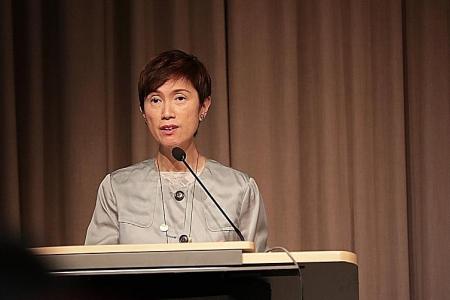Drug crimes cost Singapore over $1.2b in 2015: Study
'High' amount is sobering, says Minister Josephine Teo, considering the low abuse rates here
The cost of drug crime in Singapore was more than $1.2 billion in 2015 despite the Republic experiencing a lower drug abuse rate as compared with other countries, a Nanyang Technological University (NTU) study has found.
In deriving the total bill, researchers took into account the amount spent by different agencies in combating and preventing drug crimes, as well as the losses incurred by the drug abuser in consuming drugs, among other factors.
Second Minister for Home Affairs and Minister for Manpower Josephine Teo said yesterday that economists have attempted to quantify the cost of drug crime in monetary terms.
"Even for Singapore, where drug abuse rates are much lower than other countries, it is sobering that the total cost of drug crime was as high as $1.23 billion in 2015," said Mrs Teo at the opening of the Harm Prevention Seminar held at the Lifelong Learning Institute.
The seminar, organised by the Ministry of Home Affairs, brings together government agencies, community partners and academia to share research findings related to harm prevention.
The study showed the public sector accounted for the largest expenditure in 2015 at 38 per cent of the total bill.
Researchers took into account the operating costs of agencies such as the Central Narcotics Bureau (CNB), Singapore Prison Service (SPS) - which runs Drug Rehabilitation Centres - and the Singapore Corporation of Rehabilitative Enterprises, which provides rehabilitation services for inmates and ex-convicts.
The second highest cost to society is the loss in productivity, at 37.7 per cent. To derive this, the study, commissioned by the Central Narcotics Bureau (CNB) in 2016, considered the potential wages drug abusers could have earned if they were not incarcerated.
MISINFORMATION
Mrs Teo also spoke on the dangers of having a lax attitude towards drug use.
"There is a lot of misinformation about drug use," she said, adding that there are "incredulous claims" that cannabis is harmless.
"If we do not counter such misinformation, this may lead wrongly to the liberalisation of attitudes," she said.
Singapore's harm-prevention approach, she explained, has worked well, with the local drug situation under control despite a "significant deterioration" in the international environment.
The pool of drug abusers arrested in recent years has been halved to around 3,000, down from more than 6,000 each year in the 1990s.
Rehabilitation efforts have also led to significant improvements, with the recidivism rate for drug abusers dropping to 24.4 per cent for the cohort released in 2016, said Mrs Teo.
The NTU study, conducted by Professor Euston Quah, Associate Professor Chia Wai Mun and research associate Tan Tsiat Siong, is published in a special issue of the Home Team Journal launched yesterday.
Get The New Paper on your phone with the free TNP app. Download from the Apple App Store or Google Play Store now


